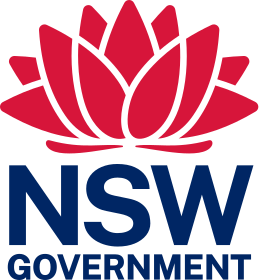Industry information
Any business that operates a public passenger bus service must be accredited to be able to provide services legally in NSW, unless otherwise specified by Transport for NSW (TfNSW). More on applying for bus and coach operator accreditation.
Driver licence and driver authority checks
Drivers must hold an appropriate driver licence and authority to drive a public passenger vehicle. Bus operators must regularly check driver licences and driver authorities for currency and should keep written records for auditing purposes.
The online MyRecords service allows authorised operators to confirm a driver’s licence and authority status. It also helps operators to demonstrate that they are regularly checking this information for the drivers they engage.
Vehicle registration
When hiring a bus from another accredited operator, it is the operator’s responsibility (not the vehicle owner), to check the vehicle is correctly registered.
Registering usage codes for public passenger buses
Bus operators must check the registration usage code recorded on the Certificate of Registration for each vehicle in their fleet and record the correct registration usage code.
The usage code for RBUS must be recorded if the vehicle:
- operates under a Regular Passenger Service accreditation
- has Motor Omnibus plates.
The usage code CBUS must be recorded if the vehicle:
- operates under a Long Distance, Tourist or Charter (LDTC) accreditation
- has TV plates.
Vehicles that are used for both RPS and LDTC services and have standard or special plates should have the usage recorded according to their primary use.
To update a vehicle’s registration usage code, please visit a Service Centre.
Vehicle Monitoring Devices
A Vehicle Monitoring Device (VMD) produces a continuous record of a vehicle’s operation.
Operators providing a public passenger service for 13 passengers are more, are required to have a VMD fitted to their vehicle.
Operators who provide a public passenger service using regular routes and timetables under a Passenger Service Contract between the accredited bus operator and TfNSW, are exempt from this requirement.
Reporting accidents and incidents
Operators must report accidents and incidents to both TfNSW and the Office of Transport Safety Investigations (OTSI), as a condition of accreditation.
The Bus Incident Management Database is available for operators to report incidents and accidents. For assistance using the database, please refer to the User Manual (PDF, 2.87 MB) or for further assistance, email bim@transport.nsw.gov.au
Support for industry
TfNSW is available to:
- Provide information, education and advice on safety issues and to identify solutions to eradicate risks and hazards.
- Respond to customer enquiries/issues on 02 8848 8755; 0467 815 745 or in person.
- Provide advice and present at bus related forums and conferences.
- Consult with industry bodies including BusNSW.
If you require any further information, contact the bus safety officer during business hours, Monday to Friday.
Shirley Wilson:
- Email: bussafetyinformation@transport.nsw.gov.au
- Phone: (02) 8848 8755 or 0467 815 745
Relevant legislation
- Reporting accidents and incidents: Clause 88 of the Passenger Transport (General) Regulation 2017
- Registration requirements: Clause 15(a) of the Passenger Transport (General) Regulation 2017
- Vehicle monitoring devices: Part 6.1 ‘Monitoring of heavy vehicles and vehicles carrying dangerous goods' and NSW Vehicle Monitoring Device Exemption Order 2017.
Industry Fact sheets and resources
To inform you of your responsibilities and compliance obligations, we have developed these fact sheets in collaboration with industry that outline safety and administrative procedures.
- Bus Incident Management Database Procedures (PDF, 444.93 KB)
- Runaway Bus Procedures (PDF, 130.64 KB)
- Registration usage codes for public passenger buses (PDF, 78.79 KB)
- Bus Pre-departure and end of shift procedures (PDF, 102.5 KB)
- Bus Safety Officers (PDF, 74.05 KB)
- Bus Operator Guide to Managing Critical Incidents (PDF, 220.25 KB)
- Bus Driver Guide to Managing Critical Incidents (PDF, 860.5 KB)
- Children left on buses Poster (PDF, 603.1 KB)
